11:33 02.03.2016
The volume of the state defense order in 2015 amounted to 1.8 trillion rubles. Today, these colossal funds mean not only the military potential of Russia, but also the functioning of thousands of research organizations and industrial enterprises. The industry participants told the Zvezda TV site about what products are produced by the Russian military-industrial complex of Russia, what they export and how they cope with external economic challenges.

The volume of the state defense order in 2015 amounted to 1.8 trillion rubles. Today, these colossal funds mean not only the military potential of Russia, but also the functioning of thousands of research organizations and industrial enterprises. The industry participants told the Zvezda TV website about what products the Russian military-industrial complex of Russia produces, what they export and how they deal with external economic challenges. The introduction of sanctions against Russia has become an impetus for the introduction of import substitution in the economy, including in defense -industrial complex. It cannot be said that the past year has become easy for the state defense order due to its volume and complexity. At the beginning of last year, Russian Deputy Prime Minister Dmitry Rogozin wrote about this on his Twitter blog. Nevertheless, the capabilities of the Russian defense industry have adjusted to external conditions thanks to its history and the support program developed by the government. Thus, the State Armaments Program until 2020 provides for more than 19 trillion rubles. At the end of February, a plant for the production of missiles for the S-400 and S-500 anti-aircraft missile systems was opened in the Kirov region. In the construction of the first air defense plant in post-Soviet Russia, built from scratch, the Almaz-Antey aerospace defense concern invested 20 billion rubles. 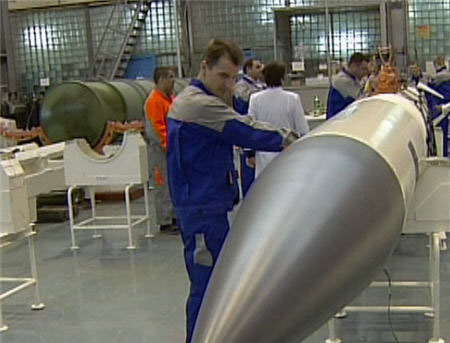 JSC Concern VKO Almaz-Antey is a Russian concern that unites enterprises that develop and produce weapons (air defense and missile defense). In addition, the tasks of the concern include the implementation, maintenance, repair and disposal for federal government needs and foreign customers of systems, complexes and means of air defense and non-strategic anti-missile defense. It is worth noting that many factories that experienced a reduction in the state defense order in the 90s are now modern enterprises. They produce not only competitive products, but also modernize their own production and adjust to external economic conditions. Heavy engineering Uralvagonzavod is one of the unique enterprises performing state defense orders ahead of schedule. It has been keeping this figure for several years, annually supplying 1,500 new, modernized and repaired vehicles for the Russian army, as well as hundreds of units of military armored vehicles for export. multibillion-dollar foreign orders for military equipment. The share of equipment produced by the plant for the ground forces is 60%. According to the Stockholm Peace Research Institute (SIPRI), Uralvagonzavod increased arms sales by 72.5%, which is the highest indicator among the Russian companies reviewed by the researchers. The portfolio of export contracts of the corporation in 2016 exceeds 240 billion rubles.
JSC Concern VKO Almaz-Antey is a Russian concern that unites enterprises that develop and produce weapons (air defense and missile defense). In addition, the tasks of the concern include the implementation, maintenance, repair and disposal for federal government needs and foreign customers of systems, complexes and means of air defense and non-strategic anti-missile defense. It is worth noting that many factories that experienced a reduction in the state defense order in the 90s are now modern enterprises. They produce not only competitive products, but also modernize their own production and adjust to external economic conditions. Heavy engineering Uralvagonzavod is one of the unique enterprises performing state defense orders ahead of schedule. It has been keeping this figure for several years, annually supplying 1,500 new, modernized and repaired vehicles for the Russian army, as well as hundreds of units of military armored vehicles for export. multibillion-dollar foreign orders for military equipment. The share of equipment produced by the plant for the ground forces is 60%. According to the Stockholm Peace Research Institute (SIPRI), Uralvagonzavod increased arms sales by 72.5%, which is the highest indicator among the Russian companies reviewed by the researchers. The portfolio of export contracts of the corporation in 2016 exceeds 240 billion rubles. 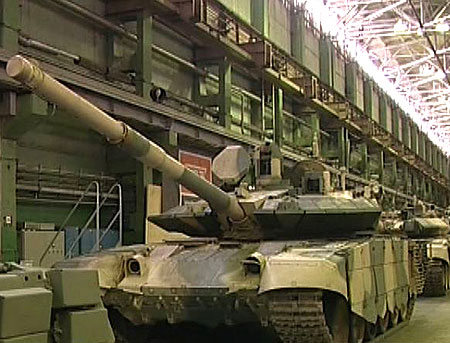 It should be noted that the corporation is also developing a civilian direction, producing wagons and tanks for Russian and foreign customers in Azerbaijan, Iran, Turkmenistan and Kazakhstan. JSC "Scientific and Production Corporation" Uralvagonzavod "named after F. E. Dzerzhinsky" is a Russian corporation engaged in the development and production of military equipment, road-building machines, railway cars. The corporation includes research institutes, design bureaus and manufacturing enterprises.Equipment modernization The enterprises that are part of the Uralvagonzavod corporation are re-equipping and increasing the share of civilian products. In the first quarter of 2016, NPO Elektromashina, part of the Uralvagonzavod corporation, will start implementing a project to build a unified test center. At present, NPO Elektromashina JSC is a developer and manufacturer of more than 300 special-purpose products. The enterprise manufactures products for the needs of the RF Ministry of Defense, Russian Railways and the Ministry of Emergencies. This project, as well as a number of others, including the reconstruction of the heat and power complex, is being carried out within the framework of the implementation of the Federal Target Program "Development of the Defense Industrial Complex Russian Federation for 2011-2020 ", which is being implemented at many enterprises of the corporation" Uralvagonzavod ". As a result of technical re-equipment of the machining production at Electromashin, 43 units of equipment were introduced. According to the corporation's specialists, the current investment activity is reduced to the automation of business processes at the enterprise. this year the enterprise will introduce an automated information system for pilot production, which will make it possible to plan costs and keep records in the implementation of R&D, ”said Leonid Zelepukhin, Director for Strategic and Innovative Development of NPO Electromashina JSC. He noted that the development strategy is being updated today the enterprise until 2020, the main focus of which will remain the production of special-purpose products for weapons and military equipment. will ensure the distribution of production of military and civilian products in a ratio close to 50/50. It is worth noting that factories with a huge history continue to modernize production. For example, the Ivanovo enterprise founded in 1924 light industry for the production of parachutes and special clothing for Russian military personnel "Polet". JSC Polet is a full-cycle enterprise for the production of parachute systems. The structure of the enterprise includes: its own sewing and metal production, design bureau, textile and chemical laboratories, its own group of testers.
It should be noted that the corporation is also developing a civilian direction, producing wagons and tanks for Russian and foreign customers in Azerbaijan, Iran, Turkmenistan and Kazakhstan. JSC "Scientific and Production Corporation" Uralvagonzavod "named after F. E. Dzerzhinsky" is a Russian corporation engaged in the development and production of military equipment, road-building machines, railway cars. The corporation includes research institutes, design bureaus and manufacturing enterprises.Equipment modernization The enterprises that are part of the Uralvagonzavod corporation are re-equipping and increasing the share of civilian products. In the first quarter of 2016, NPO Elektromashina, part of the Uralvagonzavod corporation, will start implementing a project to build a unified test center. At present, NPO Elektromashina JSC is a developer and manufacturer of more than 300 special-purpose products. The enterprise manufactures products for the needs of the RF Ministry of Defense, Russian Railways and the Ministry of Emergencies. This project, as well as a number of others, including the reconstruction of the heat and power complex, is being carried out within the framework of the implementation of the Federal Target Program "Development of the Defense Industrial Complex Russian Federation for 2011-2020 ", which is being implemented at many enterprises of the corporation" Uralvagonzavod ". As a result of technical re-equipment of the machining production at Electromashin, 43 units of equipment were introduced. According to the corporation's specialists, the current investment activity is reduced to the automation of business processes at the enterprise. this year the enterprise will introduce an automated information system for pilot production, which will make it possible to plan costs and keep records in the implementation of R&D, ”said Leonid Zelepukhin, Director for Strategic and Innovative Development of NPO Electromashina JSC. He noted that the development strategy is being updated today the enterprise until 2020, the main focus of which will remain the production of special-purpose products for weapons and military equipment. will ensure the distribution of production of military and civilian products in a ratio close to 50/50. It is worth noting that factories with a huge history continue to modernize production. For example, the Ivanovo enterprise founded in 1924 light industry for the production of parachutes and special clothing for Russian military personnel "Polet". JSC Polet is a full-cycle enterprise for the production of parachute systems. The structure of the enterprise includes: its own sewing and metal production, design bureau, textile and chemical laboratories, its own group of testers.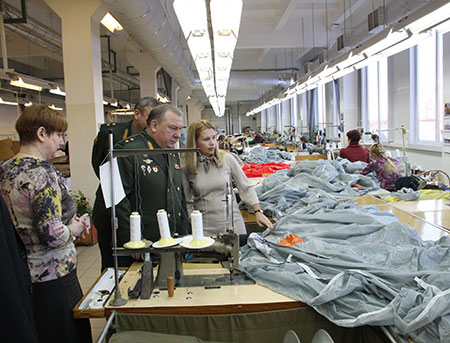 “In 2011, the plant fully deployed its capacities on the basis of a new site, which in 2007-2011. has undergone a complete reconstruction and modernization. Then the plant invested in the construction and reconstruction of production, the purchase of cutting and sewing equipment, the commissioning of a new boiler house, the improvement of the territory, "said director of the Polet plant Yulia Portnova. She noted that the company adopted a five-year program for the further development of technical re-equipment: purchase modern automated equipment, which will significantly reduce the commissioning time for new equipment produced by the enterprise. Import substitution program Due to the severance of relations with Ukraine and Western sanctions, some Russian factories that use foreign components in their production found themselves in a difficult situation. However, the import substitution program, which was approved by the Russian government, should help to cope with this situation. Russian enterprises“Engines for Murena boats are of the aviation type, similar to those installed on Mi-8 helicopters. Engines for the ship can be developed by NPO Saturn in the city of Rybinsk, ”the United Shipbuilding Corporation reported. NPO Saturn (OJSC Scientific and Production Association Saturn) is a Russian engineering company specializing in the development and production of gas turbine engines for aviation and the navy. NPO Saturn is the only company in the Yaroslavl Region included in the List of Russia's strategic organizations. It is part of the Rostec state corporation. NPO produces military aircraft engines of the IV generation AL-31F, AL-31FN, AL-31FP, aircraft engines of the V generation AL-41F1 for PAK FA, the family of AL-55 engines, engines for unmanned aircraft: 36MT, 37-01E, as well as marine ship engines M70FRU, M75RU, M90FR. A similar situation has developed with the aircraft industry. In this industry, engines for some aircraft were also produced in Ukraine. In this regard, Russian enterprises are starting their own production of aircraft engines. The deadlines, it should be noted, are tight. Thus, the Ufa Engine-Building Production Association (UMPO) will begin production of RD-33 engines for MiG aircraft in 2018. “The deadline was set for us until December 31, 2017, when UMPO should fully enter serial production of these engines. These engines will have four modifications. If we talk about commercial products, this is about 100-150 engines per year until 2025, this is our additional volume, which we count on, ”said Yevgeny Semivelichenko, Managing Director of the plant, in an interview with TASS. UMPO is the largest manufacturer of aircraft engines in Russia. Part of the United Engine Corporation. The main activities are the development, production, maintenance and repair of turbojet aircraft engines and gas pumping units, production and repair of helicopter units. Also, the production of Tu-160 strategic bombers is resumed at the Samara enterprise of the United Engine Corporation PJSC Kuznetsov. According to the Deputy Minister of Defense of the Russian Federation Yuri Borisov, this year the Ministry of Defense of the Russian Federation should receive five engines of the pilot batch in accordance with the signed contract.
“In 2011, the plant fully deployed its capacities on the basis of a new site, which in 2007-2011. has undergone a complete reconstruction and modernization. Then the plant invested in the construction and reconstruction of production, the purchase of cutting and sewing equipment, the commissioning of a new boiler house, the improvement of the territory, "said director of the Polet plant Yulia Portnova. She noted that the company adopted a five-year program for the further development of technical re-equipment: purchase modern automated equipment, which will significantly reduce the commissioning time for new equipment produced by the enterprise. Import substitution program Due to the severance of relations with Ukraine and Western sanctions, some Russian factories that use foreign components in their production found themselves in a difficult situation. However, the import substitution program, which was approved by the Russian government, should help to cope with this situation. Russian enterprises“Engines for Murena boats are of the aviation type, similar to those installed on Mi-8 helicopters. Engines for the ship can be developed by NPO Saturn in the city of Rybinsk, ”the United Shipbuilding Corporation reported. NPO Saturn (OJSC Scientific and Production Association Saturn) is a Russian engineering company specializing in the development and production of gas turbine engines for aviation and the navy. NPO Saturn is the only company in the Yaroslavl Region included in the List of Russia's strategic organizations. It is part of the Rostec state corporation. NPO produces military aircraft engines of the IV generation AL-31F, AL-31FN, AL-31FP, aircraft engines of the V generation AL-41F1 for PAK FA, the family of AL-55 engines, engines for unmanned aircraft: 36MT, 37-01E, as well as marine ship engines M70FRU, M75RU, M90FR. A similar situation has developed with the aircraft industry. In this industry, engines for some aircraft were also produced in Ukraine. In this regard, Russian enterprises are starting their own production of aircraft engines. The deadlines, it should be noted, are tight. Thus, the Ufa Engine-Building Production Association (UMPO) will begin production of RD-33 engines for MiG aircraft in 2018. “The deadline was set for us until December 31, 2017, when UMPO should fully enter serial production of these engines. These engines will have four modifications. If we talk about commercial products, this is about 100-150 engines per year until 2025, this is our additional volume, which we count on, ”said Yevgeny Semivelichenko, Managing Director of the plant, in an interview with TASS. UMPO is the largest manufacturer of aircraft engines in Russia. Part of the United Engine Corporation. The main activities are the development, production, maintenance and repair of turbojet aircraft engines and gas pumping units, production and repair of helicopter units. Also, the production of Tu-160 strategic bombers is resumed at the Samara enterprise of the United Engine Corporation PJSC Kuznetsov. According to the Deputy Minister of Defense of the Russian Federation Yuri Borisov, this year the Ministry of Defense of the Russian Federation should receive five engines of the pilot batch in accordance with the signed contract. 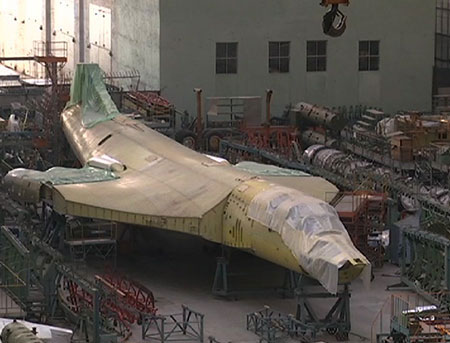 High precision manufacturing In addition, the enterprises of the United Instrument-Making Corporation continue to launch new technologies for the production of microelectronics. According to the deputy general director of the defense industry complex Andrey Chendarov, Russia has completed the creation of a technology called "Toughness". He noted that thanks to new technology The functionality of devices will increase, productivity will increase, and the size of new devices will decrease. In this regard, the dominance of foreign companies in the microelectronics market and their influence on Russian production will decrease due to the strengthening of the domestic industry. That is why the creation of an electronic component base is one of the main tasks on the agenda. In this regard, the space industry, which also works for the military, continues to increase production. Another success of the industry was the launch of the Glonass-M spacecraft into orbit in early February №51 produced by the company "Information satellite systems"Named after academician M.F. Reshetnev. ”The new GLONASS spacecraft replaced the longest-lived satellite“ Glonass-M ”No. 14 in orbit, which was transferred to the orbital reserve. As a result, the GLONASS orbital constellation uses 22 spacecraft for their intended purpose.
High precision manufacturing In addition, the enterprises of the United Instrument-Making Corporation continue to launch new technologies for the production of microelectronics. According to the deputy general director of the defense industry complex Andrey Chendarov, Russia has completed the creation of a technology called "Toughness". He noted that thanks to new technology The functionality of devices will increase, productivity will increase, and the size of new devices will decrease. In this regard, the dominance of foreign companies in the microelectronics market and their influence on Russian production will decrease due to the strengthening of the domestic industry. That is why the creation of an electronic component base is one of the main tasks on the agenda. In this regard, the space industry, which also works for the military, continues to increase production. Another success of the industry was the launch of the Glonass-M spacecraft into orbit in early February №51 produced by the company "Information satellite systems"Named after academician M.F. Reshetnev. ”The new GLONASS spacecraft replaced the longest-lived satellite“ Glonass-M ”No. 14 in orbit, which was transferred to the orbital reserve. As a result, the GLONASS orbital constellation uses 22 spacecraft for their intended purpose.  “We constantly follow modern trends in the field of satellite construction, use and create advanced technologies at all stages of spacecraft development. Every year our company invests heavily in the modernization of production in order to ensure the manufacture of competitive products in accordance with the highest international standards, ”said general manager"ISS" them. Academician MF Reshetnev "Nikolay Testoedov. Company "Information Satellite Systems" named after academician M.F. Reshetnev "- the leading enterprise in Russia for the creation of spacecraft for communication, television broadcasting, relaying, navigation, geodesy. It is worth noting that high-quality communications for the Russian army are provided not only by satellites, but also by ground stations produced by Ryazan Radiozavod. Technical re-equipment of the plant made it possible to supplement the stock of equipment for procurement production, and the rationalization proposals of the plant employees allowed the company to save 788 thousand rubles in 2015. Ryazan Radio Plant is a Russian state-owned enterprise of the electrical industry, a structural part of the Sozvezdiye concern, which is the largest supplier of communications for the Russian Ministry of Defense."The developments of the Ryazan Radio Plant are interesting and foreign countries... In particular, negotiations on supplies are underway with Iraq, Saudi Arabia, Kuwait, Egypt, Nigeria, "- said the head of the Ryazan Radio Plant, Alexander Zinkov. In this regard, the Russian defense-industrial complex can not only ensure the fulfillment of the state defense order in 2016 by introducing an import substitution program, but also ensure the implementation of international contracts for the supply of weapons. : Mikhail Rychagov Photo: "ISS" named after academician M. F. Reshetnev "/ Alexey Ivanov TRK" Zvezda "/ Ministry of Defense of the Russian Federation
“We constantly follow modern trends in the field of satellite construction, use and create advanced technologies at all stages of spacecraft development. Every year our company invests heavily in the modernization of production in order to ensure the manufacture of competitive products in accordance with the highest international standards, ”said general manager"ISS" them. Academician MF Reshetnev "Nikolay Testoedov. Company "Information Satellite Systems" named after academician M.F. Reshetnev "- the leading enterprise in Russia for the creation of spacecraft for communication, television broadcasting, relaying, navigation, geodesy. It is worth noting that high-quality communications for the Russian army are provided not only by satellites, but also by ground stations produced by Ryazan Radiozavod. Technical re-equipment of the plant made it possible to supplement the stock of equipment for procurement production, and the rationalization proposals of the plant employees allowed the company to save 788 thousand rubles in 2015. Ryazan Radio Plant is a Russian state-owned enterprise of the electrical industry, a structural part of the Sozvezdiye concern, which is the largest supplier of communications for the Russian Ministry of Defense."The developments of the Ryazan Radio Plant are interesting and foreign countries... In particular, negotiations on supplies are underway with Iraq, Saudi Arabia, Kuwait, Egypt, Nigeria, "- said the head of the Ryazan Radio Plant, Alexander Zinkov. In this regard, the Russian defense-industrial complex can not only ensure the fulfillment of the state defense order in 2016 by introducing an import substitution program, but also ensure the implementation of international contracts for the supply of weapons. : Mikhail Rychagov Photo: "ISS" named after academician M. F. Reshetnev "/ Alexey Ivanov TRK" Zvezda "/ Ministry of Defense of the Russian Federation
That is, hydrocarbons and their derivatives were exported for $ 355 billion in 2013.
It turns out that Russia received $ 238 billion in 2013 from the export of goods and services, in addition to oil and gas.
238 billion non-fuel exports - a lot or a little?
For comparison, the entire total export of goods and services in Russia in 2004 was
Does anyone remember the 2004 economic apocalypse? Not? This is because it was not there. Somehow we were able to survive such a scanty export. And in previous years, exports were even lower - and nothing like quinoa was eaten.
What are these 238 billion dollars of Russian "non-fuel" exports made of?
To begin with, this is 70 billion of exports of services.: transport, tourist, financial, consulting, computer, technological, educational, construction, etc.
These are deliberately non-resource and, as a rule, high-tech exports of Russia, and often Russian companies are among the world leaders or have unique competencies in the global service market in the respective industries.
No post will be enough to tell you about all the exporters, there are hundreds of them, so I will limit myself to only the most interesting examples from different areas:
1. Nuclear power engineering.
Rosatom-
one of the world leaders in the number of nuclear power units being built abroad (16% of the world market for NPP construction services). Russia exports full cycle nuclear technologies, from design / consulting to turnkey construction with servicing and participates in nuclear projects in China, Iran, India, Finland, Bangladesh, Jordan, Bulgaria, Slovakia, Turkey, Vietnam, Belarus, Ukraine. In total, agreements were signed for the construction of 20 power units, and the value of the order book reached $ 74 billion in 2013.
http://www.atomic-energy.ru/interviews/2014/01/21/46169
http://www.rosatom.ru/journalist/main/
http://www.rosatom.ru/aboutcorporation/activity/energy_complex/designandbuilding/bild_npp_2/
2. Financial services
Russian forex broker "Alpari"
is one of the five largest world forex brokers (according to the Forex Magnates rating), with a turnover of more than 1 trillion. dollars a year. Has branches in the USA. UK, UAE, China.
Winner in the category "Best Forex Broker in Europe - 2013" at the International Finance Magazine Award.
3. Freight transport
Volga-Dnipro Group of Companies - the world leader in the segment of super-heavy and oversized air transportation with a turnover of over $ 1 billion. It has branches in the USA, Great Britain, Ireland, China.
Sovcomflot According to the annual rating of the 10 leading companies in the world engaged in tanker transportation by the German Institute of Merchant Shipping and Logistics (Institut fürSeeverkehrswirtschaft und Logistik - ISL), as of January 1, 2012, Sovcomflot ranked second after the Japanese company Mitsui O.S.K. Lines (ranked based on the Clarkson Research Services Tanker Register). The English Lloyd's List announced in November 2012 that Sovcomflot was ranked first in terms of fleet deadweight among the largest tanker carriers.
4. Export of development services software
According to the report of RUSSOFT analysts for 2013 , the volume of Russian software exports in 2012 amounted to $ 4.6 billion, of which about half accounted for sales of finished products (see below), and half - for services of software developers on demand. Among them: Luxoft, which the European Outsourcing Association recognized as the 2011 outsourcing company, and also awarded it the IT Outsourcing Project of the Year award; DataArt, which Business Week magazine named one of the best growing outsourcing companies in the world.
5. Construction abroad
OJSC "Mosmetrostroy" won the tender and build l under the Bosphorus Strait in Turkey, a hydraulic tunnel with a diameter of 6 meters and a length of 3.4 km, is currently building a subway in Chennai (India) and a high-speed railway Tel Aviv-Jerusalem.
6. Space launches
Russia is a world leader in the market for commercial space launches, putting satellites, cargo and people into orbit, with revenues from this activity about $ 1 billion a year.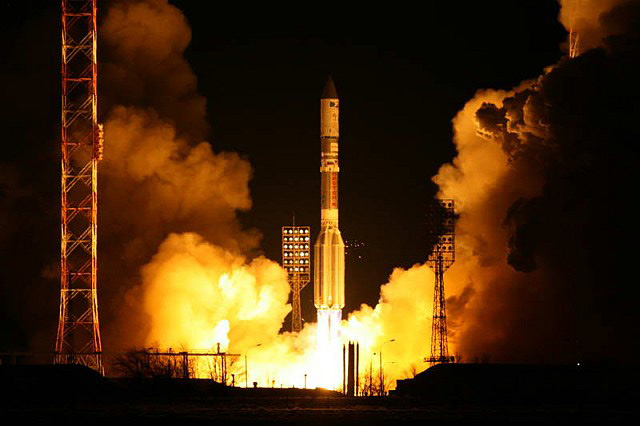
7. Aircraft design and consulting
Group of companies "Progresstech" is a leader in Eastern Europe for the provision of intelligent services in the aerospace and air transport industries. More than 1000 Progresstech engineers provide engineering services for foreign and Russian developers and manufacturers of aviation equipment. Since 1998, Progresstech has been actively involved in the creation of all the latest modifications of Boeing civil aircraft (Boeing 777 and Boeing 737), as well as in the design of the new Boeing 787 and Boeing 747-8 aircraft. Rendered engineering and consulting services within the framework of aircraft building programs: Sukhoi Superjet 100, MS-21, Airbus A320, A330, A350, A380; Gulfstream G250, G650; Cessna Columbus; Mitsubishi Regional Jet; Bombardier CSeries, Learjet 85.
Also involved in the development of Boeing aircraftNIK company ... (500 engineers)
Group "Kaskol" with the help of its engineering center "Ikar" (200 engineers) carries out work on the design of Airbus aircraft.
8. Business intelligence and consulting
Prognoz, an international company headquartered in Perm, has already implemented more than 1,500 projects for the implementation of analytical software for 450 customers in more than 70 countries. Among her clients are the IMF, WHO, Coca-Cola, 3M.
9. Telecommunication services
FSUE "Space Communication" provides access to the space segment to users from 35 countries and is confidently one of the ten largest world operators satellite communications by the volume of the orbital-frequency resource.
Rostelecom is a key executor of several international projects that play a significant role in the transmission of traffic between the states of Eurasia. In particular, the Company launched the Transit Europe-Asia (TEA) system with a capacity of up to 3.2 Tbit / s. It is a reliable all-terrestrial transcontinental traffic transit route, an alternative to submarine cable systems. Together with three foreign operators, Rostelecom is participating in the implementation of a new large-scale project for the construction of a high-speed transit line Europe-Persia (EPEG) with a capacity of up to 3.2 Tbit / s, which will connect Europe and the Middle East.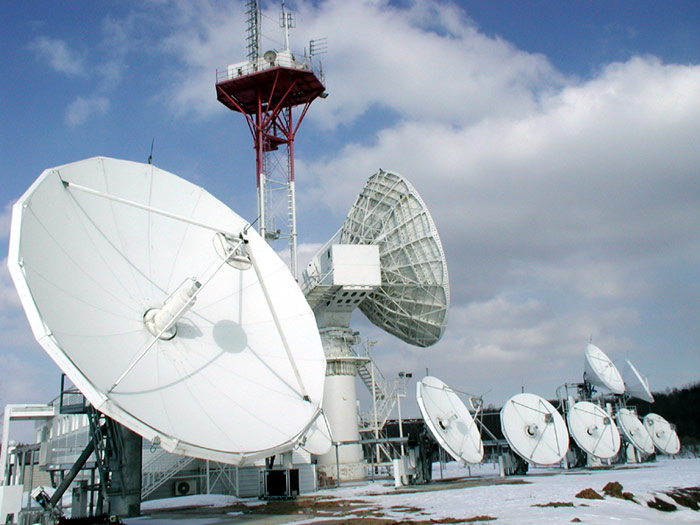
10. Tourist and business travel
Russia annually receives millions of tourists and business visitors, their service brings in more than 7 billion dollars a year.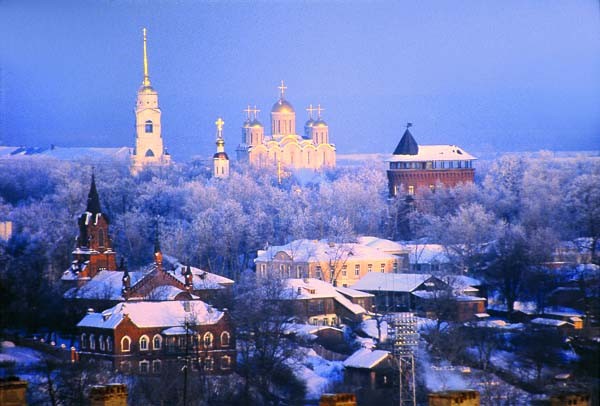
***************************************************************************************************
Further, Russia exports about $ 150 billion of non-primary goods.(if you subtract from 238 billion 70 billion services and 18 billion round timber, ore, coal.).
The general list of exporters again exceeds several thousand positions, so I will again give enlarged categories with some vivid examples of Russian exporters.
11. Metallurgy
Export of products metallurgical industry reaches $ 40 billion.
It includes ferrous and non-ferrous metals in ingots and their products. For a number of positions, Russia is a key exporter in the world - for titanium, nickel, and aluminum. 
For instance,PSC VSMPO-AVISMA Corporation is the world's only fully integrated manufacturer of titanium products - sponges, ingots and all types of semi-finished products from titanium alloys. The corporation operates in the most knowledge-intensive technological sectors of the world economy - aerospace, energy (including nuclear), chemical engineering, shipbuilding, medicine, etc. Partners of VSMPO-AVISMA Corporation - more than 300 companies in 48 countries of the world, including the leaders of the world aircraft industry- the first supplier of titanium for AIRBUS INDUSTRIE and the second for BOEING.
12. Chemical industry
Russia is the world leader in the production of synthetic rubber, some fertilizers, and chemicals, with annual exports of over $ 30 billion.
13. Agriculture and food
In 2013, the export of agricultural products from Russia amounted to 15 billion dollars ... These are mainly grains - wheat, rice, corn.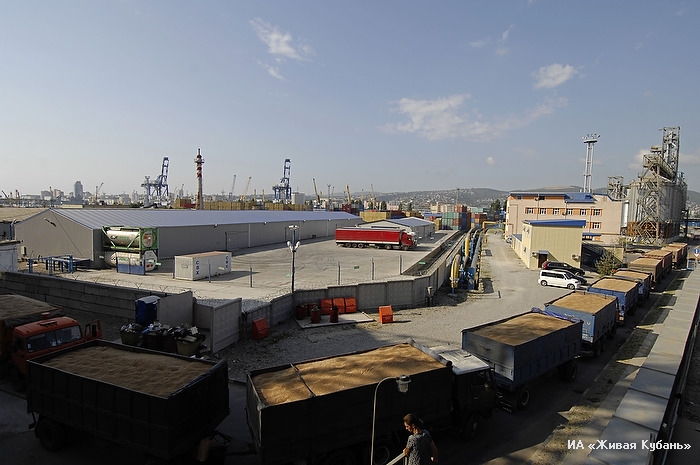
14. Armaments
Russia is the world's second largest arms dealer after the United States,with exports of 15.7 billion ... dollars in 2013. The accumulated package of orders for today is 40 billion. Among the major buyers are India, China, Algeria, Venezuela, Vietnam, Indonesia. The main sales are in the line of armored vehicles, air defense systems, combat aircraft / helicopters and naval weapons.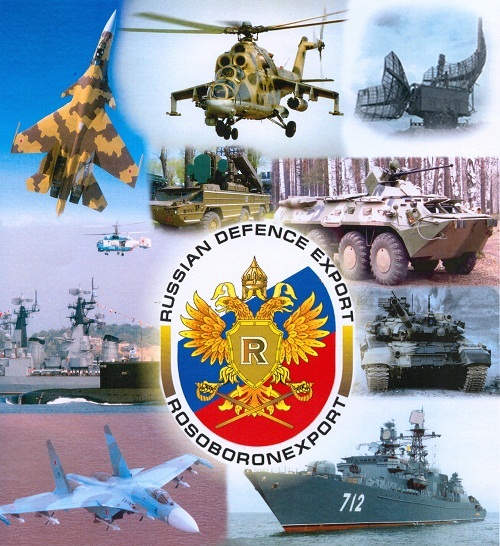
15. Heavy engineering
"Gidropress"
:
supplies press-forging equipment to the countries of near and far abroad Kazakhstan, Belarus, Ukraine, Latvia, Uzbekistan and far abroad countries: India, China, Iran, Mongolia, Poland.
"Tyazhmehpress":
Voronezh plant for the production of heavy mechanical presses. The largest enterprise in Russia that develops, manufactures and supplies equipment for forging and sheet stamping production and workshops. At present, the plant has completely captured the world market for the supply of heavy crank hot stamping presses; out of 15 KGSP with an effort of over 12000 tf, produced by five firms, 7 presses were manufactured by the Tyazhmekhpress plant; out of 27 presses with a force of 8000 tf produced by the same 5 firms, 14 were manufactured by the Tyazhmekhpress plant. The consumers of the products manufactured by the plant are the USA, France, Italy, Spain, Japan, South Korea, China, etc. 70 to 95% of the presses produced by the plant are exported.
Transmashholding:
JSC Transmashholding manufactures diesel locomotives, electric locomotives, wagons, ship / diesel locomotive diesels; products are exported to the CIS countries, Poland, Germany, Bulgaria, Vietnam, Syria. Annual volume - $ 500 million
URALMASH:
heavy cranes, excavators, mining, drilling, metallurgical equipment, which are supplied to 42 countries, including Japan. Korea, India, China, Finland, Germany, Poland, etc.
16. Shipbuilding
Severnaya Verf - drilling platform supply vessels for Norway
"Krasnoe Sormovo", "Red Barricades" - Caspian tankers for Kazakhstan, Iran.
Volgograd Shipyard - In 2003-2006. a series of dry cargo vessels was built for the Turkish company Palmali. In 2005, the British Royal Society of Naval Engineers recognized the dry cargo ships of this project as a unique and significant vessel of the year. A series of 4 dry cargo vessels was also performed for the Iranian company.
17. Aviation
Sukhoi Superjet 100 is a short-haul airliner, 12 aircraft have been exported to date, more than 50 firm orders for export.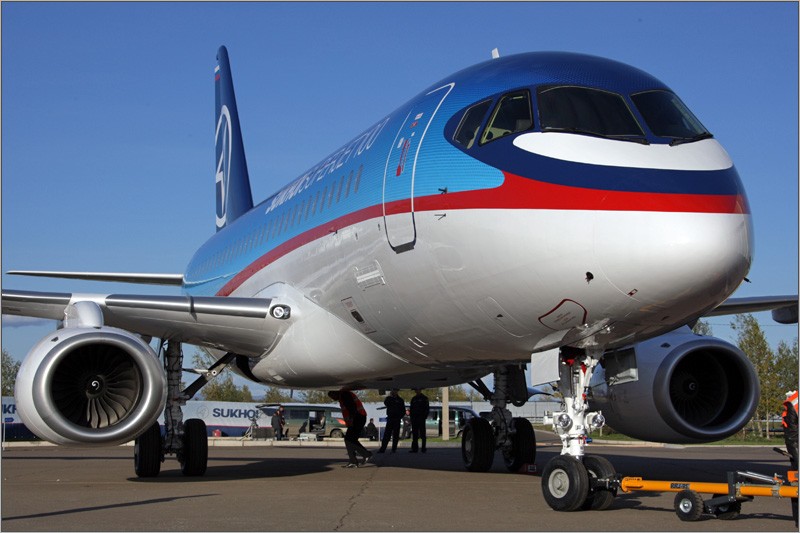
Russian Helicopters holding is the world's No. 1 manufacturer in the segment of medium and super heavy helicopters. In monetary terms - 14% of the total world helicopter market.
As of 2013, the enterprises of the Russian Helicopters holding produced 35% of the world fleet of combat helicopters, 74% of the world fleet of super-heavy helicopters with a maximum take-off weight of over 20 tons, as well as 56% of the world fleet of medium-heavy helicopters with a maximum take-off weight of 8 to 15 tons. More than four hundred firm orders from abroad.
18. Optics
In Russia there are a number of manufacturers producing telescopes and optics for export - Intes, Interoptik, Astrosib, Lytkarinsky plant (LZOS).
For example, since 1994, LZOS has manufactured optical parts with a diameter of 500 mm to 2300 mm in more than 20 international projects: main mirrors with a diameter of 2 meters for three telescopes of the Royal Greenwich Observatory (Great Britain); a set of astronomical mirrors for the Chinese Academy of Space Technology; the main telescope mirror with a diameter of 1.23 meters for the Max Planck Institute in Heidelberg (Germany); the main telescope mirror with a diameter of 2.6 meters for the VST project (Italy); main telescope mirror with a diameter of 2.3 meters for the National Observatory in Athens
19. Instruments, scientific equipment
-) is known for various lines of applied devices, from low-dose scanners for medicine and aviation security to industrial accelerators. The bulk of INP's innovative products go abroad. For example, the main customers of more than 180 accelerators supplied by the institute were the USA, Korea, India, Poland and other countries, more than 40 units were purchased by China. Manufactured and supplied equipment worth over $ 100 million for the Large Hadron Collider (LHC) in Europe.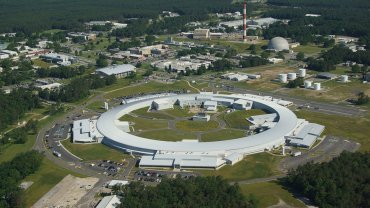
- NT-MTD - the world leader in the production of scanning probe microscopes
- Deacont large manufacturer devices for non-destructive testing and maintenance of pipelines. Sells products in the USA, Japan, Europe.
- Intron - flaw detectors and building inspection services
20. Boxed software
Kaspersky: antivirus software. An international group of companies with a central office in Moscow and representative offices in Great Britain, Germany, France, USA, Japan, South Korea, China, the Netherlands, Poland and Romania. The partner network unites over 500 companies in more than 60 countries around the world. One of the five leading global developers of software for protecting information from Internet threats.
ABBYY: OCR programs, translators
.
The ABBYY group of companies includes9 international offices
in Russia, USA, Germany, Great Britain, Japan, Taiwan, Ukraine and Cyprus, high-tech Russian agency for translation by ABBYY Language Services (Perevedem.ru) and publishing house ABBYY Press. ABBYY's head office in Moscow is responsible for product development and coordination of the company's offices in other countries. ABBYY products worldwide are used by about 30 million people in 130 countries, technologies are used in their products by the leading players in the document management and data entry market - DELL, EPSON, Fujitsu, HP, Lexmark, Microtek, Panasonic, Siemens Nixdorf (Germany), Samsung Electronics, and a lot others.
Acronis: backup systems
.
It has 17 offices around the world, the number of licenses sold exceeds 2 million. clients- Cisco Systems, Lufthansa, McKinsey & Company, Oracle, Siemens, Novell, General Electric, Bayerand many other.
Major developments are underway in Moscow.
21. Machine tools, tools
SKIF is a Belgorod manufacturer of cutters with a unique diamond coating, which are used for processing non-ferrous metals. They are used by the world manufacturers of the aeroxomics complex.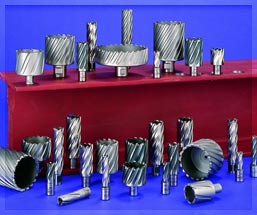
- Industrial lasers are exported by several companies.
for instanceIPG Photonics- an international corporation, founded in 1991 in Russia and owned by Russians, produces industrial lasers of medium and high power.
The company is one of the three leading world manufacturers of industrial lasers, capitalization exceeds $ 1 billion, in the segment of ultra-high-power lasers - a monopoly.
22. Consumer goods
BASK winter clothing - exported to 12 countries of the world (Great Britain, Canada. Scandinavian countries). The best high-tech winter jackets for me. Even Lebedev likes it.
"Wimm-Bill-Dann" - major exporter drinks and baby food in the CIS.
- Furniture (for example, the Foton factory)
- Armored vehicles (hehehe)
23. Electrical engineering
RUSELPROM - 30% of the electrical machines produced by the concern are exported. The most demanded products of "RUSELPROM" abroad are electrical machines for large energy facilities, metallurgical companies, machine-building enterprises. KEY DIRECTIONS OF EXPORT: CIS countries (Belarus, Kazakhstan, Ukraine) Countries Western Europe(Germany, Italy) Central and South-East Asia(India, China, Iran, Afghanistan) Central and South America(Brazil, Argentina, Cuba, Venezuela). LARGE FOREIGN PROJECTS EQUIPPED WITH PRODUCTS OF THE CONCERNER: HPP: TPP: Teri (India) Suichzhong, Yimin, Jixian, Rogun, Nurek Kenkou, Huangen Beijing (China) (Tatjikistan) Ramin (Iran) Gudtan-2, Afghanistan ) MEGOLO (Italy) New Aurora, Goyandira (Brazil) Metallurgical plants: NPP: Raaha (Finland) Lovisa (Finland) Novaya Huta (Poland) Kozloduy (Bulgaria) Iskenderun (Turkey) Mohovets, Bohunica Karachi (Pakistan) (Slovakia) Bokaro, Bhilan, Paks (Hungary) Viskhapatnam (India)
24 Electronics
-
The company "Transaz "- the world leader in the production of marine navigation systems and professional simulators for the commercial fleet. 45% of the global market for marine simulators, 35% of the global market for electronic mapping systems. Marine onboard equipment is successfully used on more than 13,000 commercial vessels around the world,
More than 5,500 training systems have been installed in training centers in 91 countries of the world. 205 onshore vessel traffic control systems have been successfully delivered and operate in 100 ports in 55 countries of the world.
- The products of the Telesystems company are exported to the USA, Great Britain, Canada, France, Germany, Italy, Israel, Australia and other countries - professional voice recorders, tracking sensors, voting systems, etc.
- Solar panels and power systems from the Solar Wind company - megawatts of products exported to Europe
- Zelenograd enterprise Angstrem exports microcircuits to South Korea (!?)
25. Energy
- FC "TVEL" carries out export supplies of nuclear fuel, as well as provides services for the conversion and enrichment of uranium. TVEL FC is the world leader in the production of nuclear fuel (NF) and the provision of uranium enrichment services. The share of the Fuel Company in the fabrication market is 17%. Rosatom State Corporation (through TVEL FC and JSC Techsnabexport), URENCO, AREVA (France) and USEC (USA) jointly control about 95% of the uranium enrichment services market.
Power Machines:
a cluster of machine-building plants and design organizations that produce power equipment for hydroelectric power plants, thermal power plants, including turnkey power plants. Exports equipment and services to Egypt, Vietnam, Brazil, Serbia. Mexico, Greece, Argentina, Iran and other countries.
********************************************************************************************
Based on the experience of the previous post, I will immediately give answers to the most common objections
1) "Oh, what is so little, and that's all?"
I repeat, this list is not a complete and exhaustive enumeration of all Russia's competitive exports. It would be impossible to place him in a post, there are thousands of positions. I just want to show the diversity of our export assortment. I want to show that we can do anything well, from electronics to giant excavators.
2) No, this list was not made under the slogan “Hurray! Russia is ahead of the whole planet! "
This list is not intended to convince anyone that everything is good and wonderful and that all the technologies are in order.
Yes, in Russia a lot of polymers have been screwed up (processing centers, physicists, the world's best synchrotron phase generators, etc.). You don’t need to run to me in comments and lament about the wretched Soviet pseudoglucometers.
They still did not help the USSR.
3) "Yes, this is all the heritage of the USSR!"
If you take a list of high-tech exports of any country, you will find that all this is the backlog of yesteryear.
Just try to be imbued with the thought that coming up with / inventing is not half the battle. And not even 10%. This is 1%.
And 99% is to create a competitive efficient production, service and sales system.
At us, sorry, some exporters still cannot make a normal website - when I was preparing this post, I saw enough of this. Kick-ass is simple. And if you remember the shovel quality and packaging .. ooh.
4) "There are imported components!"
If you take a high-tech export list of any country, you will find that everything is done on imported components. And often abroad. For example, the iPhone is made in China - but for some reason it is considered American.
5) Yes, we have less than 40% of high-tech / non-resource exports in total.
So what? The smaller share of high-tech exports does not mean that the economy is backward in raw materials.
She only says that the country has a lot of raw materials, which it itself cannot digest.
These, in addition to Russia, are Canada and Norway. Australia. The character of raw materials is determined not by the share of high-tech exports, but by the contribution of the raw materials industries to GDP. Which Russia has much less than half, for reference.
You need to worry about technological equipment, labor productivity, etc. and that's another story.
6) "Oh, how many of these jackets are you exporting, not a penny!"
Well, yes, a penny here and there - in the amount of over a hundred billion comes out. And so a penny, yeah.
The world is simply drowning in brands - signs with them dazzle on the streets, haunt you on the Internet and in stores. However, what happens if you find out that all this diversity is nothing more than an appearance that is created purely for commercial purposes. The facts show that free competition on a planetary scale is nothing more than an illusion carefully crafted by marketers. These 10 companies are global monopolies - they make billions of dollars every day from everyday commodities - food, drinks, clothing and accessories.
Danone
Revenue for the year:$ 24.9 billion
French dairy producer Danone has long grown from a local producer to an international giant organization that owns stakes in food companies all over the world - from Russia to Brazil. Yoghurts, dairy products, confectionery and bottled water - in one single supermarket, there will be no less than ten names of products that Danone has had a hand in one way or another.
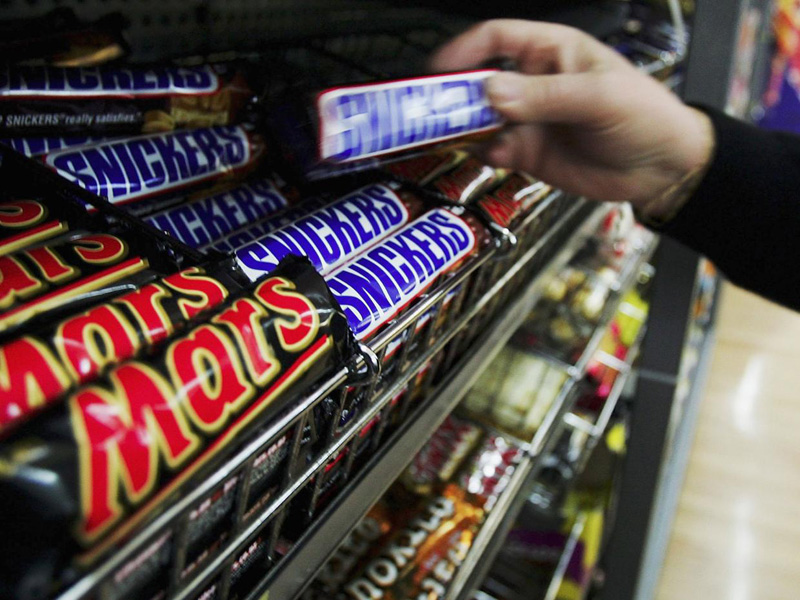
Mars
Revenue for the year:$ 33 billion
Mars is best known for its chocolate brands - Snickers, M&M, Bounty and many others. The corporation also owns the production of Uncle Ben's instant groats, as well as Orbit gum factories around the world.

Menu Foods
Revenue for the year:$ 32 billion
In 2007, a scandal erupted in the United States over the mass poisoning of pets with pet food. The analysis showed that the poisonous substance was found in more than 150 brands of food. It was then that it became known that all these brands belong to the Menu Foods corporation. The products of the corporation differ in brands, while they are produced on the same technological lines, but occupy different price categories. The incident cost the company 35 thousand dollars and ended with the renaming of the management company into EOS Direct. In addition to feed, the company is engaged in the production of the famous energy drink Red Bull.
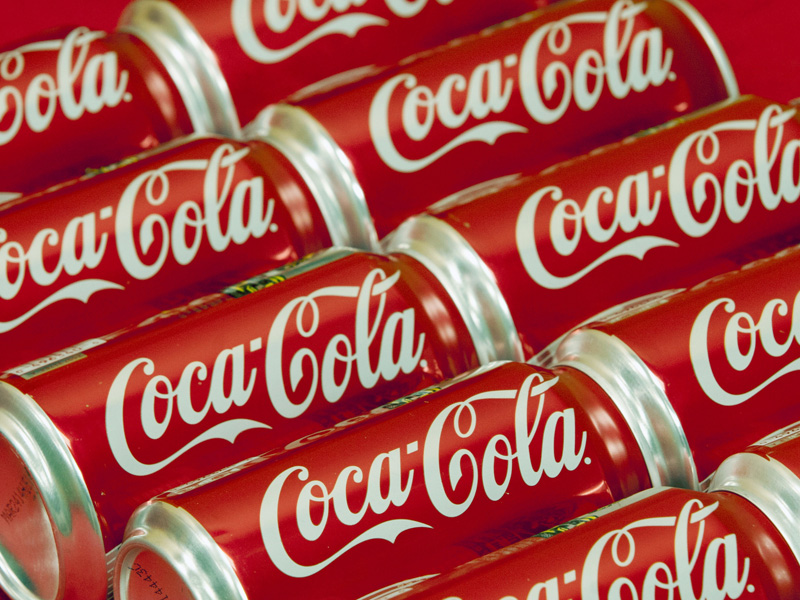
Coca-Cola
Revenue for the year:$ 44 billion
Coca-Cola today produces the overwhelming majority of cold drinks in the world - the corporation owns dozens of brands of juices, carbonated drinks, iced tea and energy drinks. The active position of Coca-Cola in the market today has led to the fact that the brand's branded refrigerator is available even in the most remote places on the planet.

Unilever
Revenue for the year:$ 59 billion
The range of products manufactured by Unilever is truly wide - from cosmetics and hygiene products to tea and mayonnaise. Unilever owns over a hundred brands, including names such as Lipton, Calve, Domestos and many others. At the same time, the corporation is part of an even larger one - The Procter & Gamble Company.

PepsiCo
Revenue in 2015:$ 63 billion
The company produces soft drinks, juices, snacks and other food products under the brands Pepsi-Cola, Mountain Dew, Lay's, Cheetos, Mirinda, SoBe, Tropicana, as well as local brands in different countries the world.
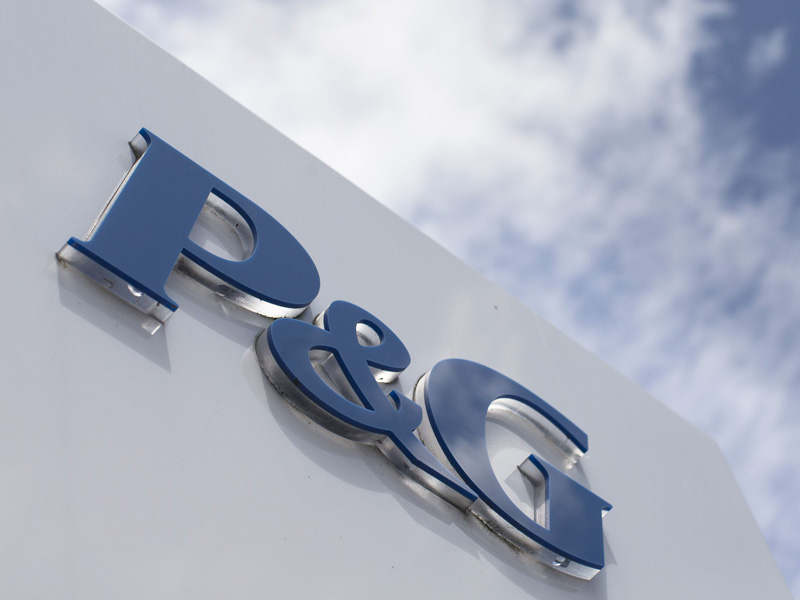
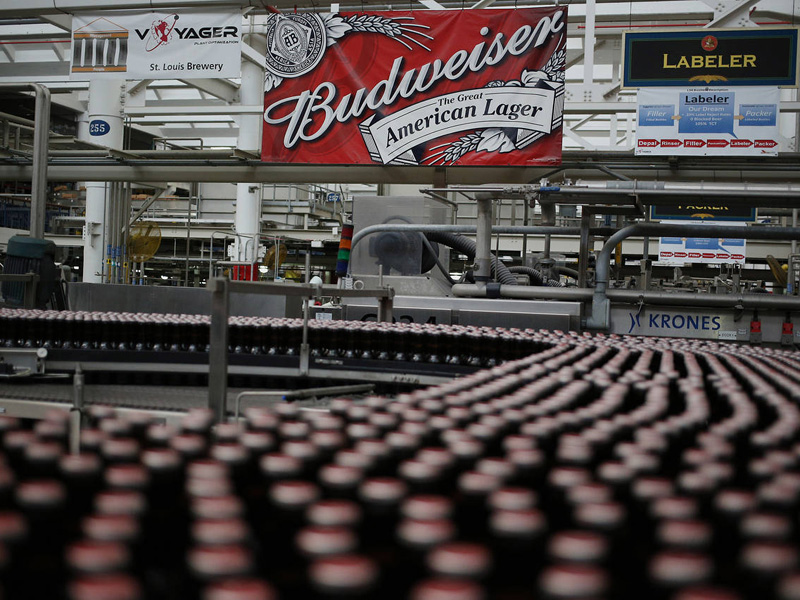
InBev
Revenue for the year:$ 56 billion
With a probability of 99.9 percent, "American" Bud and "German" Carlsberg are brewed somewhere in the Moscow region at one of the hundreds of factories of the world corporation InBev. The corporation has bought many national brands and now manufactures them all over the world, sharing their marketing positioning. The main beer brands of the company are Stella Artois, Beck "s, Leffe, Staropramen, Tennents and Hoegaarden - there are more than 200 of them. The company owns 123 breweries in different countries of the world.




